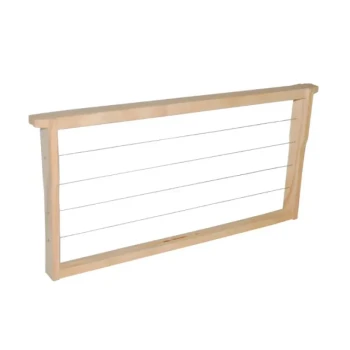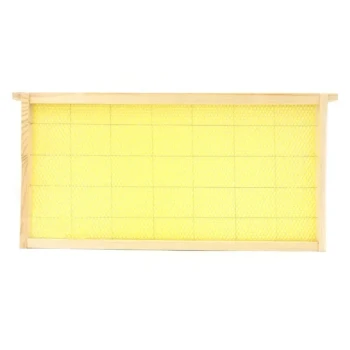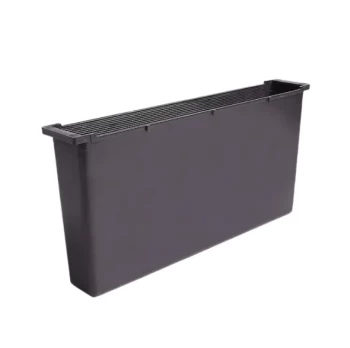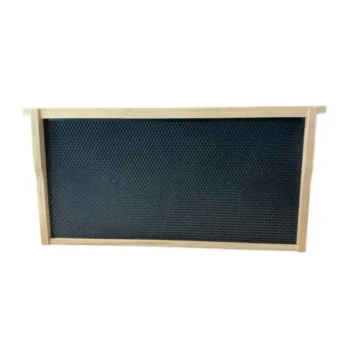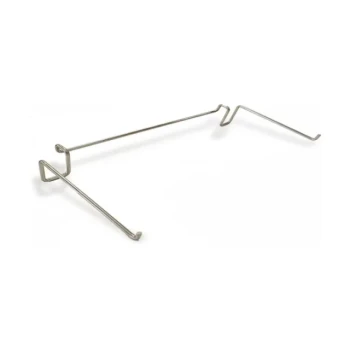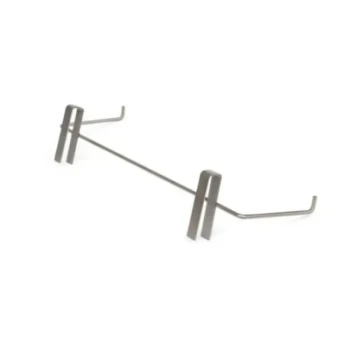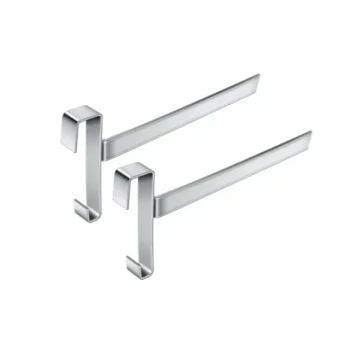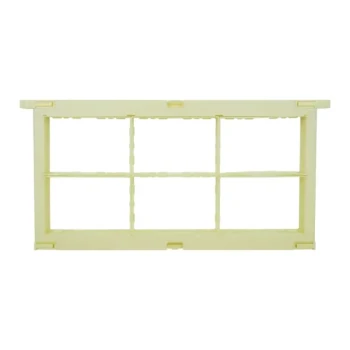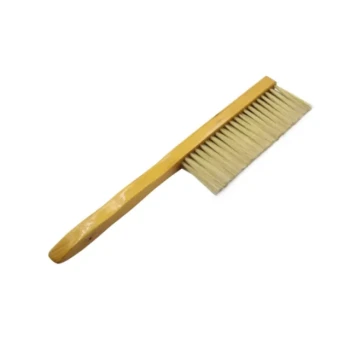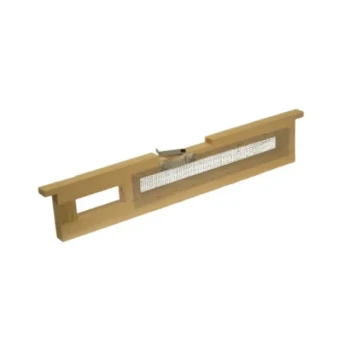The number of brood frames in a healthy hive is not a fixed target, but a dynamic indicator of its strength and the time of year. A very strong hive during the peak of the season might have six to eight frames with significant brood coverage in a single deep brood box. However, that same hive will have far fewer in the fall and potentially none in the dead of winter.
The central takeaway is to stop focusing on a single "correct" number. Instead, learn to evaluate the quantity and quality of brood frames in the context of the season to accurately assess your colony's health and the queen's performance.
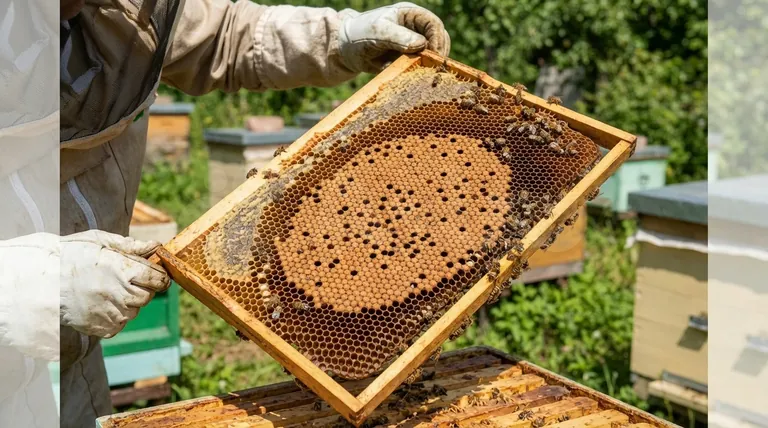
The Brood Nest: A Barometer of Hive Health
A beekeeper's primary goal during an inspection is to "read the frames." The brood nest tells you a story about your queen, your colony's population dynamics, and its readiness for the season's challenges.
Brood Quantity as a Vital Sign
The number of frames containing brood (eggs, larvae, and pupae) is a direct measure of your queen's laying rate. A larger brood area means more new bees are being raised, which is essential for population growth and replacing older foraging bees.
The Critical Importance of Brood Pattern
More important than the raw number of frames is the brood pattern. A healthy, productive queen will lay eggs in a tight, contiguous pattern, often creating a solid oval shape across the frame. You should see eggs, young larvae, and capped brood all clustered together.
A spotty or "shotgun" pattern, with many empty cells scattered among capped brood, is a significant warning sign. It can indicate an aging or failing queen, inbreeding, or disease issues within the colony.
The Seasonal Rhythms of Brood Production
A healthy hive adjusts its brood production dramatically throughout the year to manage resources and respond to the environment. Understanding this annual cycle is key to making good management decisions.
Early Spring Buildup
As temperatures rise and the first pollen sources appear, the queen will begin laying. The initial brood nest may only be the size of a fist on a single frame. As the colony grows and more resources come in, this will expand steadily to three, four, and then five frames.
Late Spring & Peak Season
This is the colony's explosive growth phase. In the weeks leading up to the main nectar flow, the queen will be laying at her maximum capacity. It's during this period you will see the highest number of brood frames—often six to eight frames in a standard ten-frame Langstroth box will be heavy with brood.
Summer Maintenance or Dearth
After the peak, especially if a nectar dearth (a period with few flowering plants) occurs, the queen may slightly reduce her laying rate. This conserves the colony's resources when food is less abundant. The brood nest might shrink by a frame or two.
Autumn Preparation
As days shorten, the queen's laying rate decreases significantly. The colony's focus shifts from rapid expansion to raising long-living "winter bees" that will sustain the cluster until spring. The brood nest might shrink back down to three to five frames.
Winter Cluster
In colder climates, the colony will go through a natural "brood break." The queen may stop laying entirely for a period of weeks. Finding zero brood frames during a mid-winter check is often normal and healthy, as it helps break the life cycle of Varroa mites.
Understanding Equipment and Potential Pitfalls
It's easy to get confused between the number of frames the box can hold and the number of frames the bees should be using.
Brood Frames vs. Box Capacity
The reference to using 9 or 10 frames in a box is a decision about equipment spacing, not a measure of hive health. A 10-frame box offers slightly more physical capacity for the queen to lay. However, a strong colony will only use the space it can effectively manage, regardless of whether there are 9 or 10 frames available.
The Danger of Too Little Brood
If your brood quantity is significantly lower than expected for the season, it is a clear sign that something is wrong. The cause is most often a failing queen, but could also be related to pests (Varroa mites), disease, or a severe lack of pollen and nectar.
The Problem of Not Enough Space
Conversely, if the bees have filled nearly every frame in the brood box with brood, honey, and pollen, they are becoming "honey bound" or "brood bound." This lack of space is a primary trigger for swarming. You must add another box (a second brood chamber or a honey super) to give them room to expand.
Making the Right Assessment for Your Hive
Use the season as your guide to determine if your hive's brood production is on track.
- If your primary focus is early spring assessment: Look for a small but solid brood nest that is steadily growing week over week, expanding from two frames to four or five.
- If your primary focus is peak season strength: Expect to see a large, vibrant brood area covering six to eight frames with excellent patterns, indicating a colony at maximum power.
- If your primary focus is winter readiness: Look for a shrinking but still healthy brood nest of three to five frames of new bees destined to survive the winter.
- If your primary focus is diagnosing a problem: A spotty brood pattern or a consistently low brood count for the season signals the need for immediate investigation.
Focus on the seasonal trend and the quality of the brood pattern, not just a static number, to truly understand your hive's story.
Summary Table:
| Season | Typical Brood Frames | Key Insight |
|---|---|---|
| Early Spring | 1-2 frames (growing) | Small, expanding brood nest signals buildup. |
| Peak Season | 6-8 frames | Queen lays at maximum capacity for growth. |
| Autumn | 3-5 frames | Colony raises winter bees; laying rate slows. |
| Winter | 0 frames (possible) | Normal brood break helps control Varroa mites. |
Ensure your apiary thrives with the right equipment and expert support. At HONESTBEE, we supply durable, high-performance beekeeping supplies and equipment to commercial apiaries and distributors through wholesale-focused operations. Whether you're managing brood health, preventing swarming, or scaling your operation, our products are designed to meet the demands of professional beekeeping.
Let’s strengthen your hives together—contact our team today for reliable wholesale solutions!
Visual Guide

Related Products
- 3.5L Plastic Beehive Frame Feeder Deep Frame Water Feeder for In Hive Use
- HONESTBEE Wired and Assembled Wooden Bee Frames Foundation for a Thriving Hive
- Assembled Wooden Bee Frames with Beeswax Foundation Ready to Use by HONESTBEE
- Plastic Bee Frame Beekeeping Hive Frames for Wholesale
- Professional In-Hive Bee Feeder HONESTBEE Frame for Beekeeping
People Also Ask
- What are the types of internal feeders used in beekeeping? Optimize Your Hive's Nutrition Strategy
- What is a frame feeder and how does it work? An Efficient In-Hive Feeding Solution
- What is a frame feeder? A High-Capacity, Secure In-Hive Feeding Solution
- How much liquid does a frame feeder hold? Optimize Your Hive's Nutrition with the Right Capacity
- What are the advantages of using a frame feeder? Boost Hive Health with In-Hive Feeding

